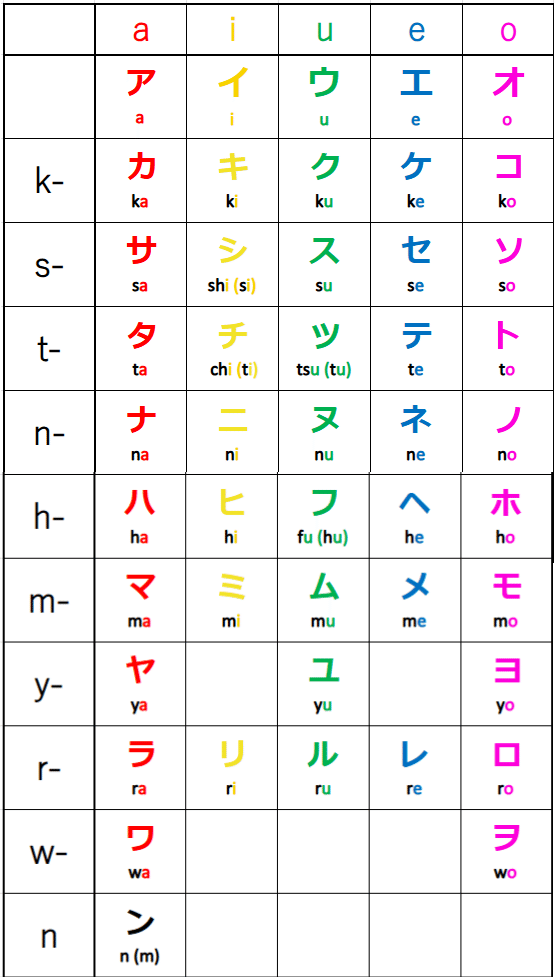
【ka ta ka na / カタカナ】Let's learn the pronunciation of Japanese katakana
Katakana is the basis of the Japanese language.
In this issue, we will introduce Katakana.
1、Let's learn about katakana
This is a table of Katakana.
The Japanese language has five vowels, "aiueo".
Consonants are basically "k-, s-, t-, n-, h-, m-, y-, r-, w-" and other sounds combined with vowels. There are also sounds that do not require vowels.

🚨The "shi" notation is in Hepburn romanization.
🚨The "chi" notation is in Hepburn romanization.
🚨The "tsu" notation is in Hepburn romanization.
🚨The "fu" notation is in Hepburn romanization. In this video, Hepburn romanization is utilized as the preferred method of notation.
🚨In Hepburnian romanization, ”m” is used when the "ン" is followed by a b, m, or p sound.
2、Introduction to Katakana pronunciation
I explain about Katakana on our YouTube channel.
The recommendation for this video is that you can understand the pronunciation and structure of Katakana.
3、Try to pronounce Katakana
We have created videos that allow you to practice on the a, ka, sa, ta, na, ha, ma, ya, ra, and wa lines. By watching and practicing over and over again, you will master fluent pronunciation!
◆アイウエオ / a i u e o
◆カキクケコ / ka ki ku ke ko
◆サシスセソ / sa shi su se so
◆タチツテト / ta chi tu te to
◆ナニヌネノ / na ni nu ne no
◆ハヒフヘホ / ha hi fu he ho
◆マミムメモ / ma mi mu me mo
◆ヤユヨ / ya yu yo
◆ラリルレロ / ra ri ru re ro
◆ワヲン / wa wo n
Thank you for reading this article to the end.
If our articles and videos have been helpful to you, we are very happy.
May you immerse yourself in Japanese, make plenty of mistakes, gain many insights, and may your dreams come true🌈
